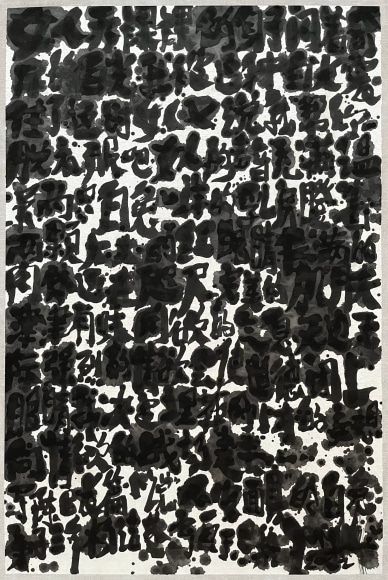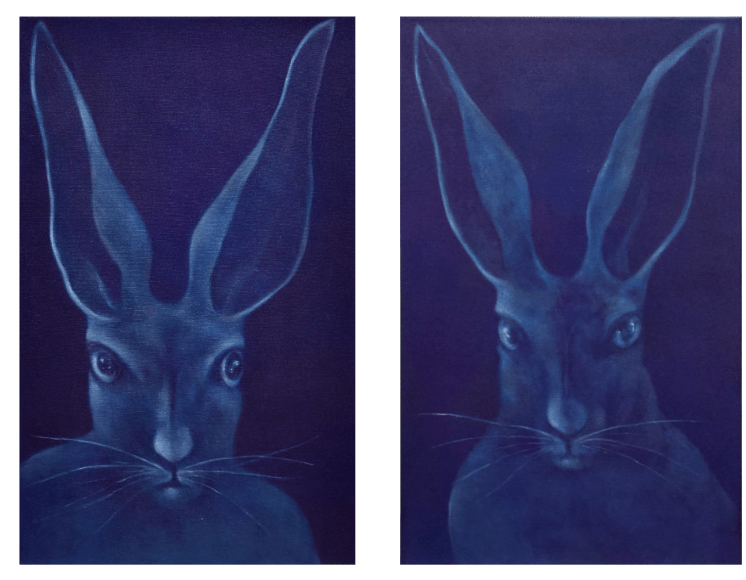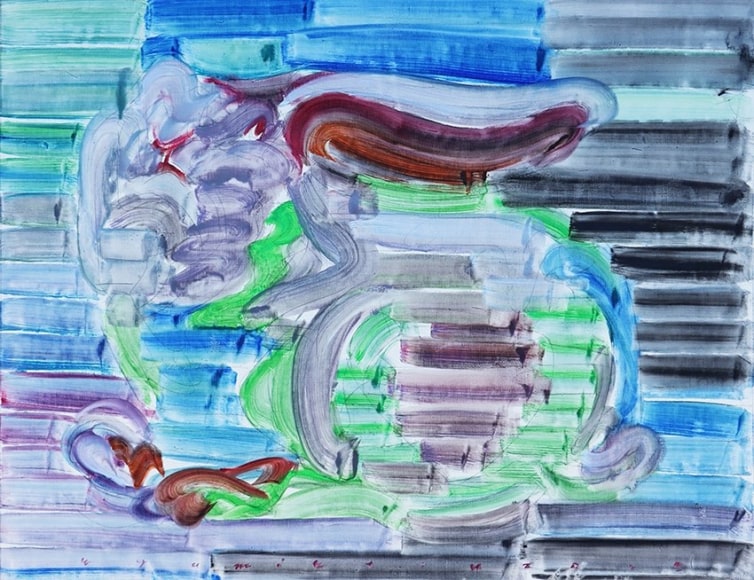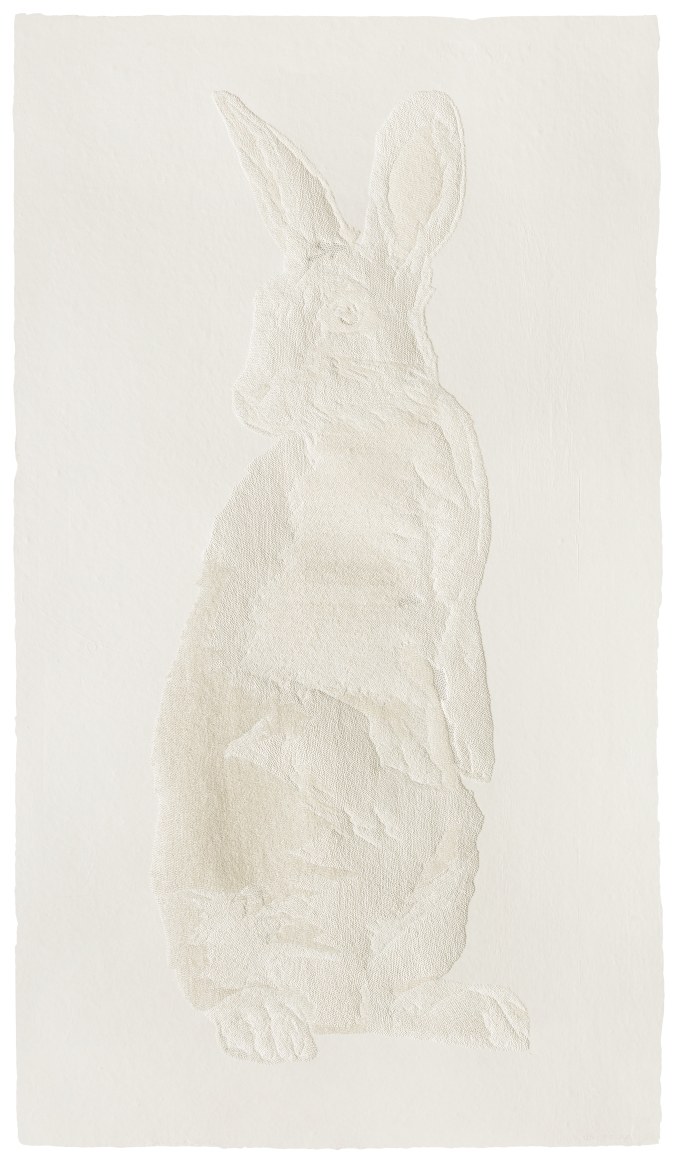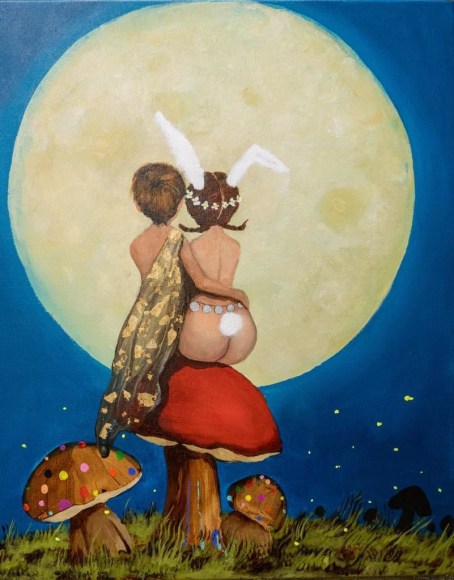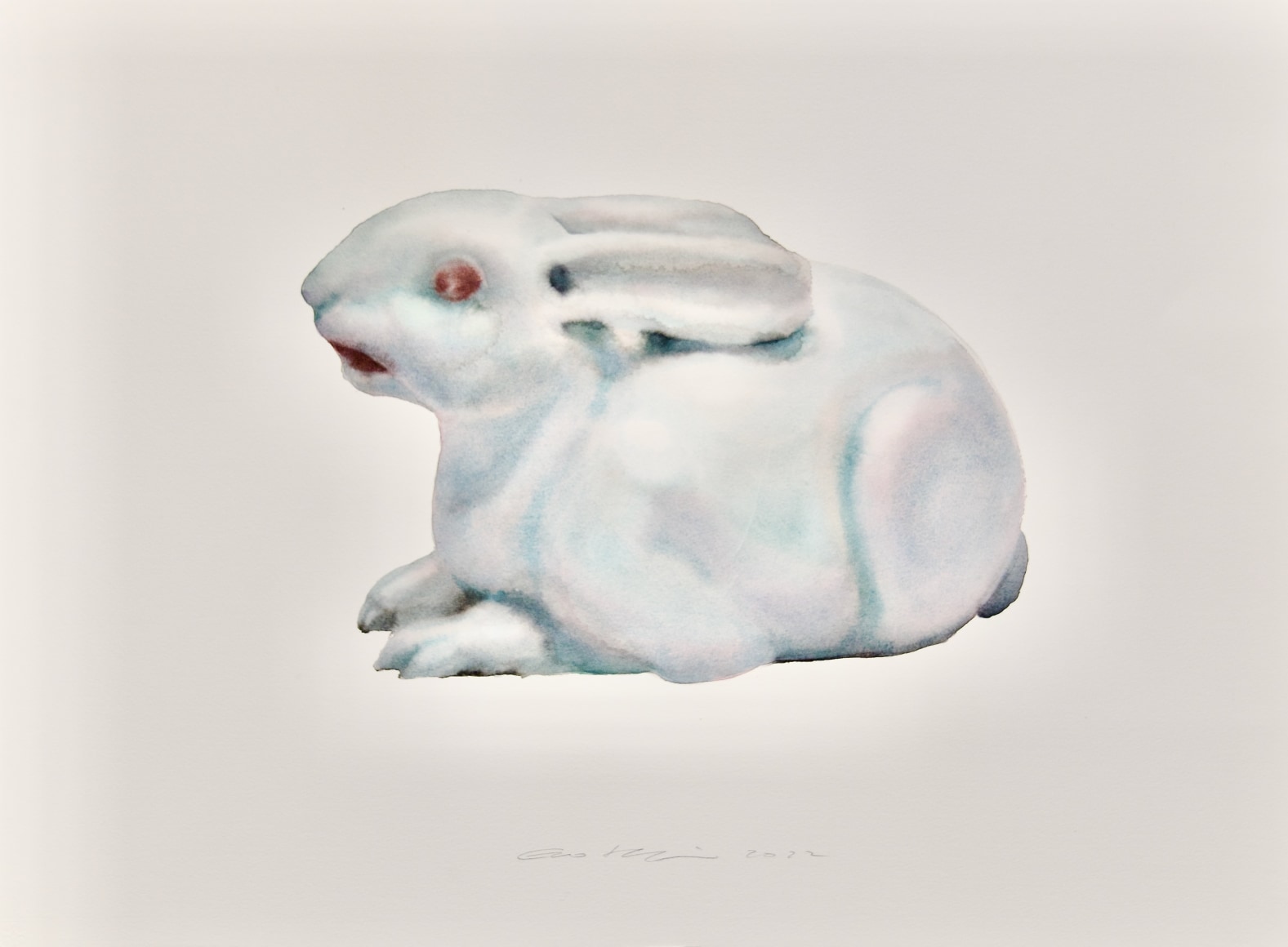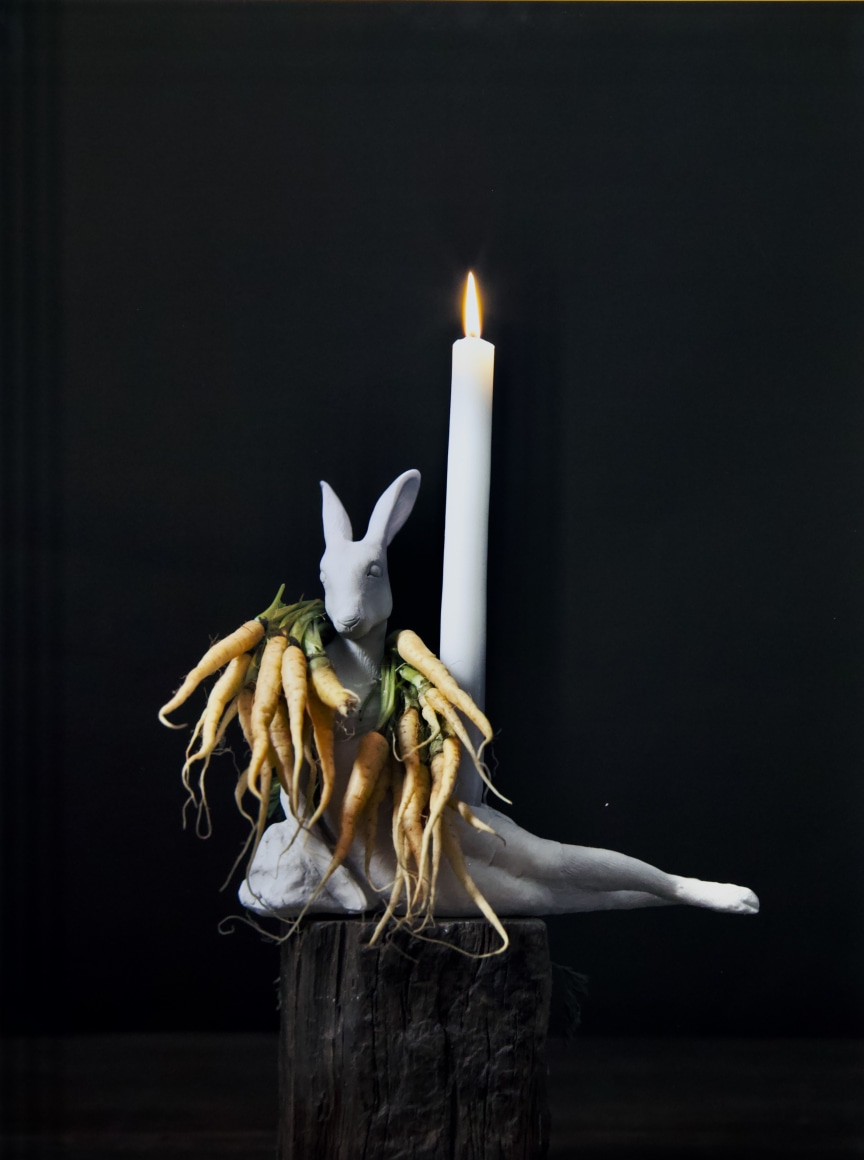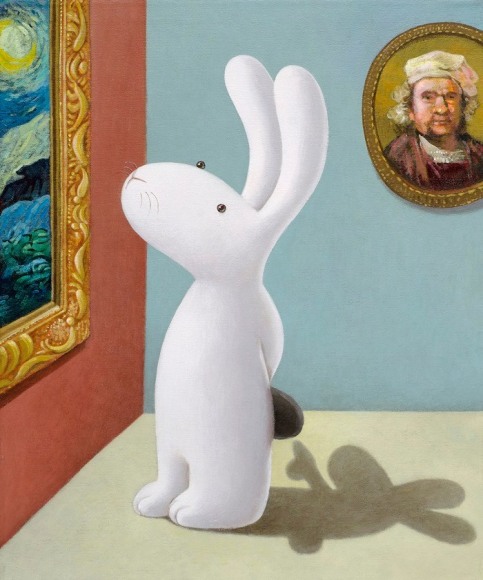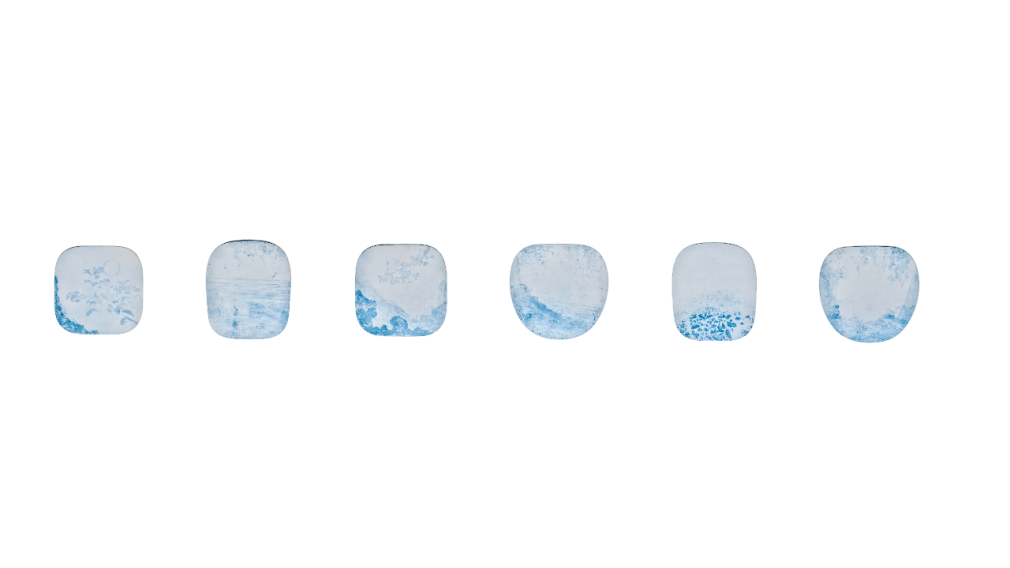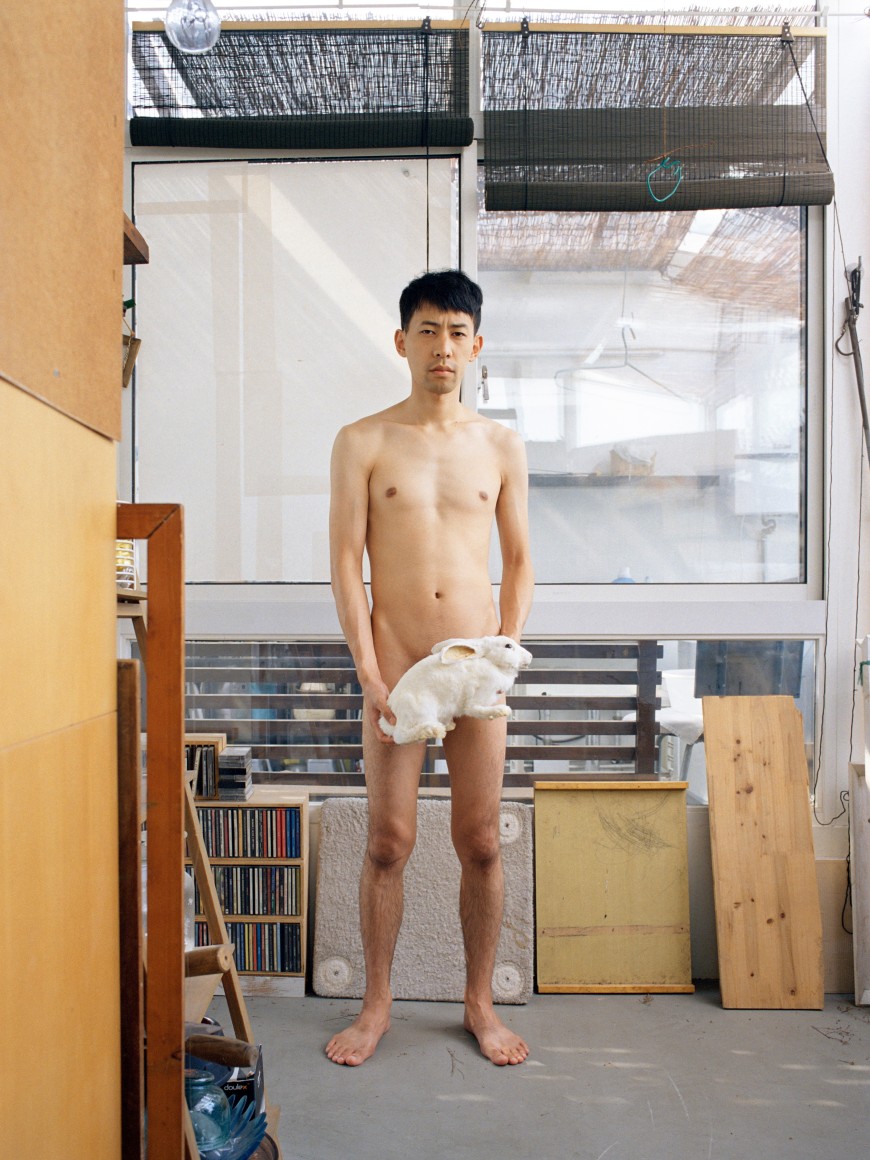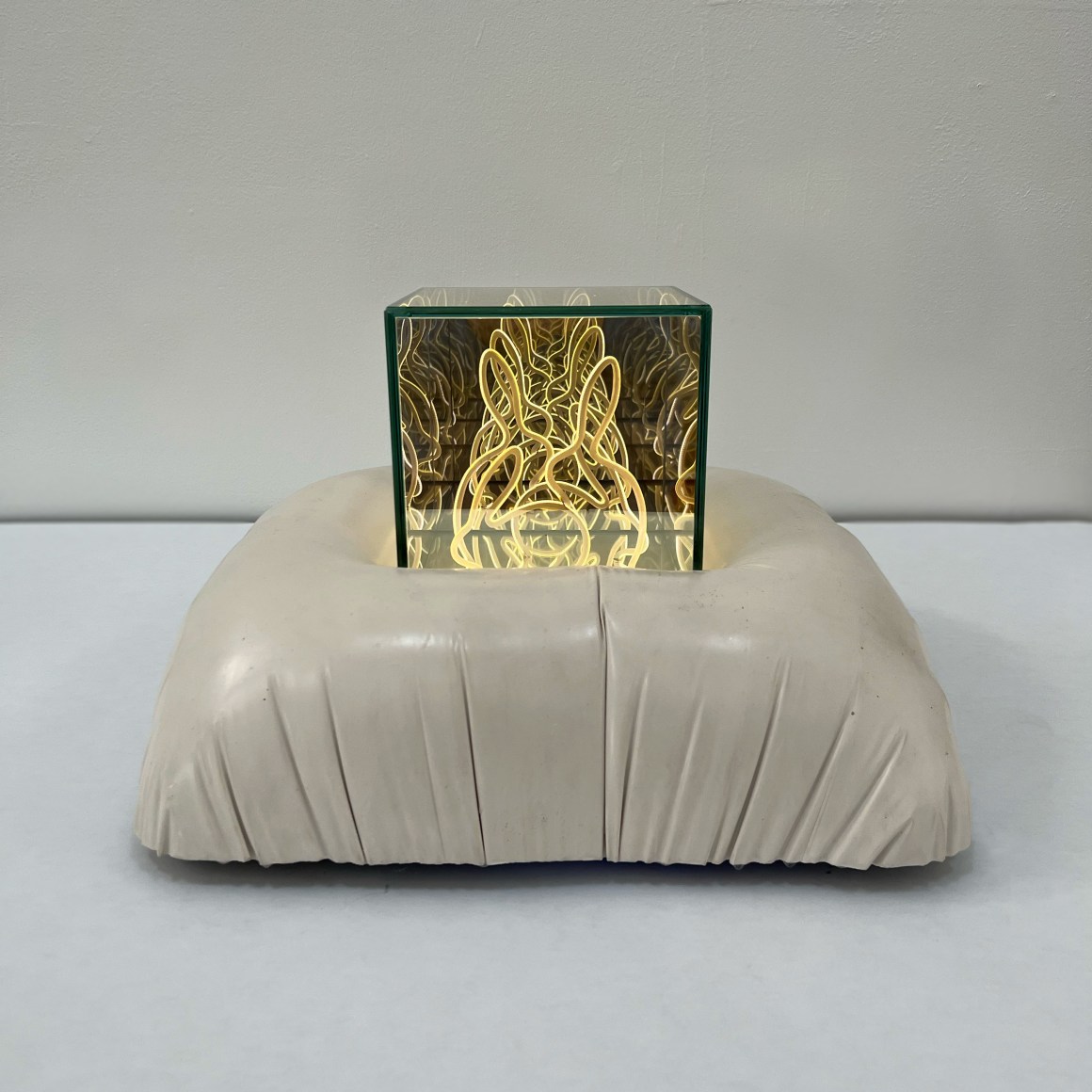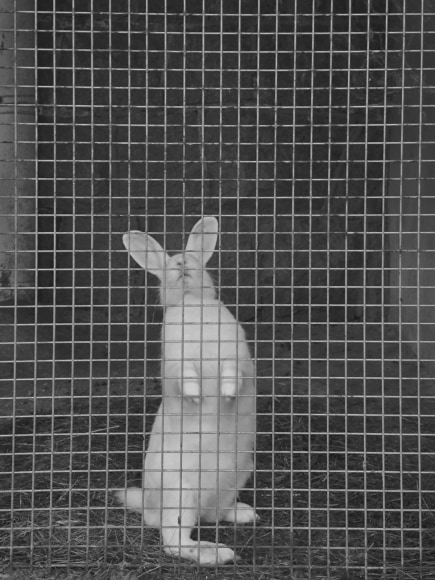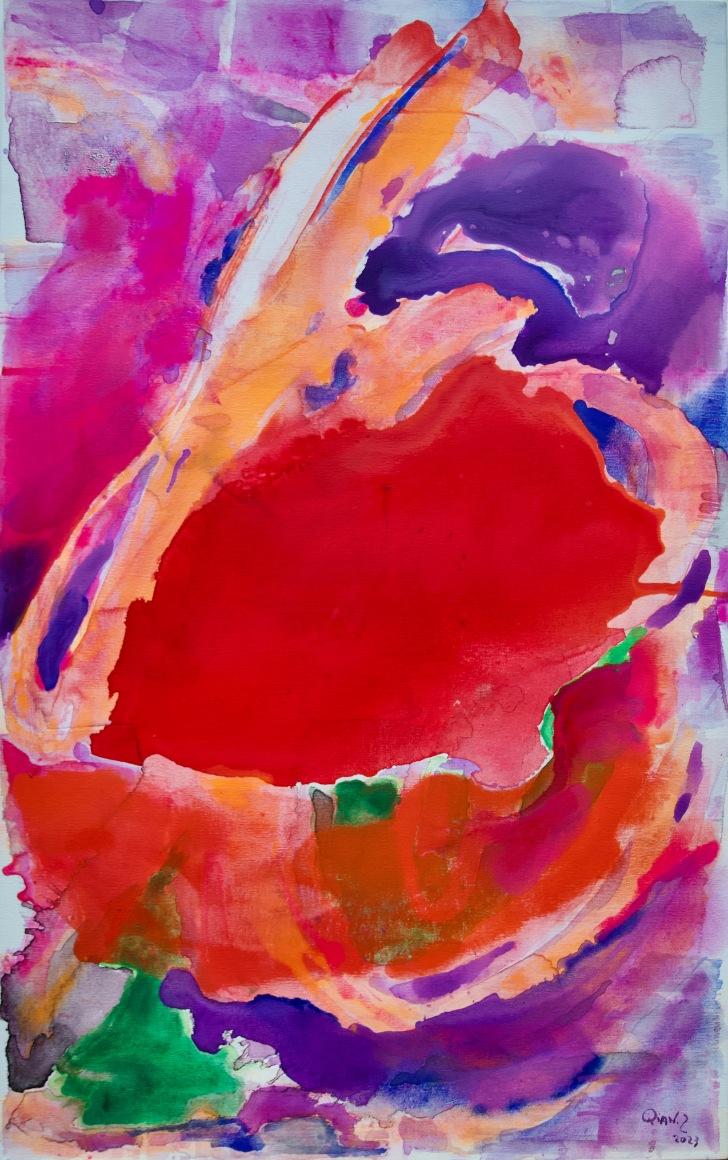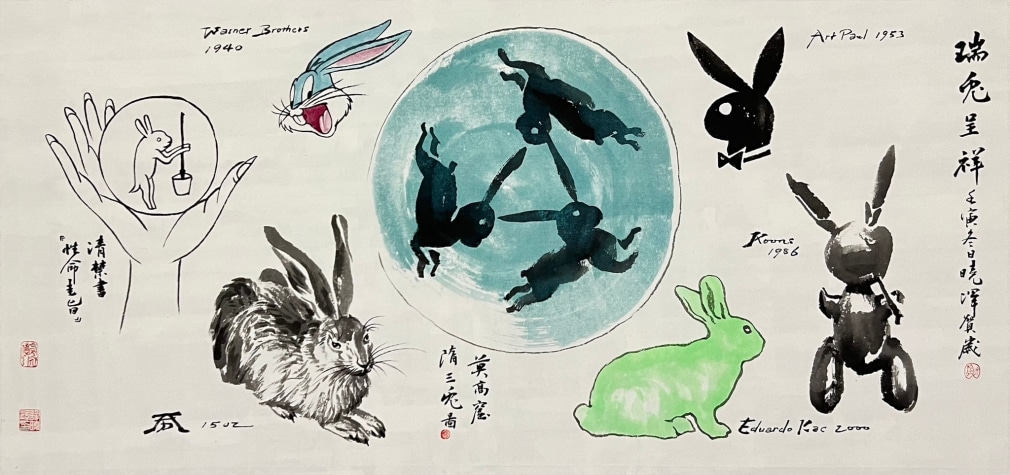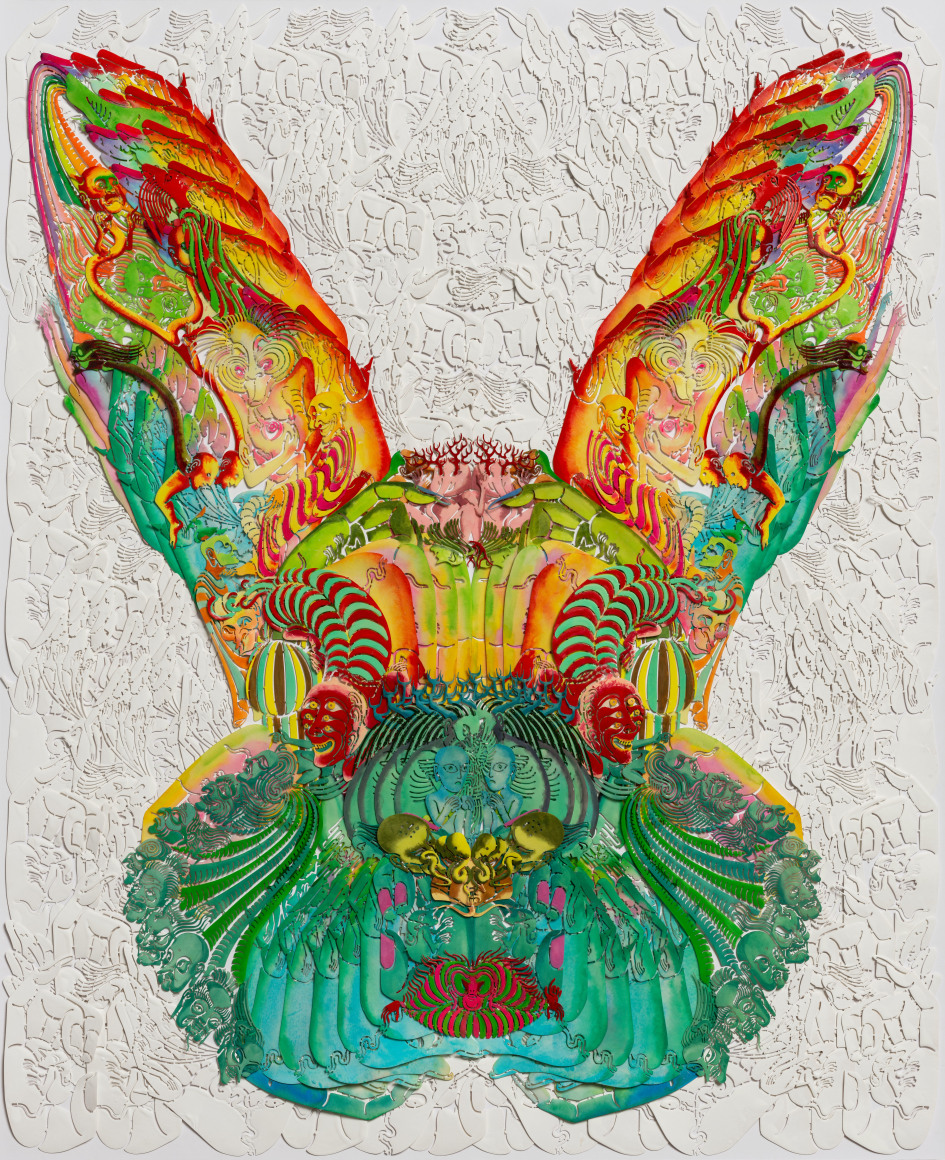The Rabbit Project
Chambers Fine Art is pleased to announce the opening on January 31, 2023 of The Rabbit Project, a celebration of the Year of the Rabbit and of the relationship between Christophe Mao, founder of Chambers Fine Art in 2000, and many of the artists who have been associated with the gallery in the past 22 years. From Lewis Carroll’s White Rabbit in Alice in Wonderland to Easter Bunnies and Playboy Bunnies, rabbits have multiple associations in Western culture but in China the rabbit has an entire year named after it, The Year of the Rabbit, and numerous legends that still resonate in Chinese society. This year it begins on January 22 and ends on February 9, 2023.
The rabbit is one of twelve animals in the Chinese Zodiac, preceded by the Tiger and followed by the Dragon. It is the luckiest of the twelve animals and symbolizes energy, elegance, and beauty. There are also legends associated with the moon rabbit dating back to the Warring States Period (475-221 BCE) in which it is companion to the moon goddess Change’e, pounding the elixir of life for her on its pestle. It lives on the moon with the toad and can be seen best on the moon on Mid-Autumn Day on August 15.
As it happens, Christophe Mao was born in the Year of the Rabbit and thought it would be a good opportunity to bring together numerous artists to celebrate this beloved creature with works created especially for the occasion, whether or not their prior work appeared to be suited for this very specific subject matter. To his delight there was enormous enthusiasm, and after a preliminary display at Phillips January 28, the entire group will be exhibited at Chambers Fine Art from January 31 to February 28. While in some cases, artists adapted their characteristic style to unfamiliar subject matter, others moved far beyond comfort zone and allowed the furry creature to suggest a new approach.
Wang Dongling (b.1945), one of the foremost calligraphers in China whose work is included in numerous museum collections including the Metropolitan Museum of Art and the British Museum, is represented by a substantial calligraphic presentation of the character for the word ‘rabbit’. In contrast, Yan Shanchun (b. 1957), known for his poetic meditations on the landscape surrounding the celebrated West Lake in Hangzhou, refers to the legend of the moon rabbit in a suite of etchings while Yang Jiechang (b. 1956) departs further from classical styles, freely combining elements of traditional Eastern and Western modes of representation.
Another group of artists take its inspiration from an entirely different Chinese tradition, namely the technique of paper cut associated with Chinese folk art. Wu Jian’an (b.1980) and Song Xin (b. 1970) were pupils of Lu Shengzhong (1952 – 2022), professor at the Central Academy of Fine Arts (CAFA), Beijing, whose study of Chinese folk art led to the development of his own life-long practice of this technique. White Rabbit for Chris was presented to Christophe Mao on his fiftieth birthday. Wu Jian’an and Song Xin have both created colorful paper cuts of a rabbit’s head. Fu Xiaotong (b. 1976) was a pupil of Wu Jian’an although she developed a highly individual technique, using a needle to pierce sheets of Xuan paper many thousands of times. Her two rabbits, titled after the number of pinpricks as is always the case in her work, are a departure from her current more abstract mode.
There is no lack of direct representations of rabbits, however, whether from painters such as Angela Lyn (b. 1955) whose rabbit is imposing in scale and in the directness of its gaze or in the typically humorous rabbits of Guo Hongwei (b. 1982) who had already devoted considerable attention to pandas in his recent paintings and watercolors. GAMA (b.1977) comes closest to the present day in his depiction of young lovers gazing at the moon.
Even artists whose practice is far-removed from realism such as Nick Dong (b. 1973) whose StudioDONG creates “experiential sculptures, objects and installations” and Han Feng (b. 1972), well known both for her clothing and installations and for her costume designs for the Anthony Mingella production of Madame Butterfly, welcomed the challenge.
Photographers were not left out of this rabbit fest. Divergent in all respects, Pixy Liao (b. 1975) and Taca Sui (b.1984), respond as one might expect to the rabbit, Pixy using one to conceal the private parts of her muse Moro. Taca, evoking a spectral creature behind bars, its diminutive scale emphasized by the overwhelming, hand-picked frame. Mention should also be made of the erudite homage to the iconography of the rabbit ranging from Albrecht Durer to Jeff Koons by distinguished painter Xiaoze Xie (b. 1966), and videos by husband-and-wife team, Song Dong (b.1966) and Yin Xiuzhen (b.1963), referencing their ongoing theme of chopsticks, and Zheng Chongbin (b. 1961) in which a rabbit emerges from the shadows in a tantalizingly brief video.
For more information, please contact us at cfa@chambersfineart.com

